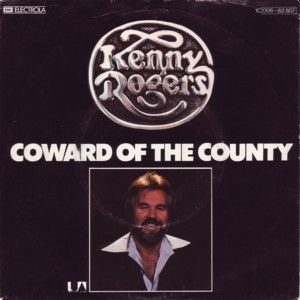Quarantine Control #77: They’re Called Half-Vaxxed Gamers

The news that vaccine mandates are being imposed for most United States businesses and establishments was encouraging to hear when the White House announced the plans two weeks ago. But like any positive pandemic-related info, there was no way it would remain that way for long. Chances are this is happening too late to stop future COVID-19 variants that might resist vaccines from forming, and the fervor over booster shots is just beginning. Every time you hear anyone say that we might be turning the corner, know that another fun obstacle manifests. Make sure not to say that yourself.
Geoffrey Barnes
Lupin the Third: The Woman Called Fujiko Mine (2012)
Source: Funimation
Episodes: 13 (the whole series)

It was, at this point, impossible to be aware of how Lupin the Third: The Woman Called Fujiko Mine is vastly different from the other more familiar Lupin the Third shows in its tone and character personalities. But it’s not entirely new territory for the franchise. For this series, director Sayo Yamamoto and the assisting production crew took inspiration from the late Monkey Punch’s Lupin the Third manga stories, with characters and storylines containing darker personalities compared to their more common anime counterparts. This particular series contains a similar level of “edginess” to Michiko & Hatchin, the series Yamamoto directed prior to this one that I watched last year. Even after knowing all this, I still wasn’t ready for just how different it would be from other Lupin the Third works.
The differences in the personalities and tone seriously stick out for anyone familiar with the piles of other Lupin content in recent memory, as I did when I tackled Lupin the Third Part IV: The Italian Adventure over the spring. This series even gets darker than the early episodes of Part I, prior to when a couple of little-known guys like Hayao Miyazaki and Isao Takahata took over. Of the main characters, the titular Lupin, Daisuke Jigen, and Goemon Ishikawa are most similar to their more familiar counterparts from other shows. Changes are more prominent in the protagonist: Fujiko Mine herself. Her penchant for flirting is played up big time here, to a promiscuous degree (especially, though not exclusively, with the guys), and she doesn’t hesitate to kill if she has to. There’s also Inspector Zenigata, who’s far less comic relief compared his more common interpretation.
Yet, the changes aren’t so drastic as to feel jarring or out of character for the familiar faces. Fujiko would be the kind of person to kill people in her way if it meant she could obtain a particular treasure that could make her rich. But there’s a lot more to her. In addition to offering entertaining Lupin the Third-style thievery action with a darker twist, the series serves the purpose of being a deep dive into what makes Fujiko Mine herself tick. She’s not a bad person, but a driven one who seeks to achieve her goals regardless of whether it involves getting dirty. It’s a unique take on the formula while still maintaining a Lupin the Third feel.
Not that it’s all good, though. The series isn’t as deep of a dive into Fujiko’s personality as the initial promises suggested. It comes close to evaluating her identity by the end, but a late-game twist turns the premise on its head and contradicts part of the reason why it began the introspective. The show never stops being an entertaining ride, sometimes entertaining in its raunchiness. But it would have been better, of course, if they’d stuck the landing.
With the unique premise and visual style for a Lupin the Third series, let alone an anime, it’s a shame it didn’t receive more time to spread its wings. Unlike every other Lupin the Third TV series, The Woman Called Fujiko Mine ends at a mere 13 episodes, all of which at least have small continuity connections. This series was followed up with a movie trilogy of films that totaled about an hour each. But they don’t strike the exact same tone as this one thanks to Sayo Yamamoto not being involved with them, and only one of those is focused on Fujiko herself. But there was still more that could have been done with it; more time could have been dedicated to fleshing out its late-game twist, for instance.
The Lupin the Third franchise has been chugging along fine these days, with regular series installments coming every three years since Part IV arrived in 2015. Part VI will begin airing in weeks, to commemorate the series 50th anniversary this year. But I’m hoping this darker, more manga-faithful take on the series will have another run between the more traditional installments. Yamamoto’s involvement would be nice, too, even though she’s been occupied with Yuri on Ice in recent years.
Angela Moseley
Since we’ve been mainly using our introduction paragraphs to talk about COVID, my contribution for this week’s QC is more than fitting. I can’t speak for other major U.S. cities or even international cities, but the testing and vaccination rollout in Philadelphia saw its fair share of controversy. Thankfully, a podcast series created by our local NPR member station documented it all.
Half Vaxxed (2021)
Source: WHYY
Episodes: 5

The story of Philly Fighting COVID and the City of Philadelphia breaking ties with the group seemed to come out of nowhere on a cold January day earlier this year. In the early stages of the pandemic, getting tested for COVID was a problem. The problem was much worse in communities of color in Philadelphia, especially black communities. When the issue of testing disparities was raised around March 2020, I had heard of the Black Doctors COVID-19 Consortium. I even donated to their GoFundMe campaign. As far as I knew, they were the biggest game in town for free mass COVID testing. I had completely missed the rise and fall of Philly Fighting COVID until it blew up into a major story.
WHYY (one of Philadelphia’s NPR member stations) produced Half Vaxxed, a five-episode podcast that detailed the origination and demise of Philly Fighting COVID. The reporters also looked at how the Philadelphia Health Department failed to properly vet the organization. Worst yet for the city, officials are called out for ignoring the Black Doctors COVID-19 Consortium founded and staffed with experienced doctors in favor of a start-up headed by a 22-year-old with no medical experience.
Andrei Doroshin is a Drexel University graduate student originally from California with big dreams and ambitions. He wanted to change the world in a big way, not unlike the famous tech start-ups in Silicon Valley. At the age of 17 he calmed to have founded Invisible Sea, a nonprofit located around Palm Springs. He claimed to have contributed to major legislation surrounding air quality and water conservation. Except the group only managed to raise $700 out of a $50,000 goal. No government or nonprofit officials had ever heard of Doroshin or his group. He used this claim as part of his college application. His “Fake it ‘til you make it,” attitude wouldn’t bode well for the future of Philly Fighting COVID.
Doroshin originally founded PFC in order to help out with the efforts to deliver PPE to healthcare workers. He created the group and sent the message out via social media that he was looking for volunteers to help. Many people answered the call, including Amanda Hughes who wanted to help fight the pandemic. Hughes was charmed by Doroshin’s get it done attitude and by the fact that she was helping to make a difference. While they continued to print and distribute PPE, the group brainstormed their next big project. Their next big project was to start a free COVID testing site. Using money from the CARES Act and a lot of networking with local businesses, the group was able to set up free testing sites. PFC’s operation grew larger as more volunteers were recruited and more people were tested.
Eventually, Colleen Tingey of Philadelphia’s health department noticed and reached out to PFC. Philadelphia offered them funding in exchange for vaccinating underserved populations (i.e. majority poor, black, and brown areas of the city). Until now Doroshin had been funding the group with his own money, but now he could actually pay his staff. The payout for the group was roughly $250,000. (At this point I have to mention the Black Doctors COVID-19 Consortium had been up and running before Philly Fighting COVID. They had to largely rely on donations because they hadn’t been given funding from the city.) Volunteers like Hughes had been told PFC would be doing testing for a long-time.
Although PFC did perform well with their mass testing sites, their undoing came at the hands of their CEO. Once it became clear that vaccinations were in play as early as October 2020, Doroshin’s desire to make money at all costs became clear. He saw charging for vaccination distributions as his key to become rich. Once he was granted the ability to run a mass vaccination clinic at the Pennsylvania Convention Center, he began shifting his non-profit to something else. The COVID testing sites were abandoned and staff members who disagreed with the pivot were fired. It would take a short three weeks from PFC’s mass vaccination rollout for Philadelphia officials to cut ties and claimed they were duped.
Half Vaxxed does a great job investigating Doroshin’s past, the people who volunteered with PFC, and how good intentions can be exploited or go awry. It is an interesting tale of greed, willful ignorance, and how systemic racism played an unintentional role.
Joseph Daniels
So for those of you paying attention, Mike Richards is indeed still being listed as the Executive Producer of Jeopardy! in the end credits. That should tell you the current episodes were taped before he was fired. As far as we all know, his influence over Jeopardy! is pretty much over, and all that’s left are any lawsuits he files in revenge.
And now, back to our regularly scheduled Quarantine Control, already in progress.
GAMERS! (2017)
Source: Crunchyroll
Episodes: 12

Do you like romantic comedies? Do you like video games? Do you want to see a group of gamers have hilarious misunderstandings for twelve episodes regarding who’s going out with whom? Then here’s the anime for you!
Well, I mean, if you like video games, the games aren’t a huge part of the plot, and after the first couple episodes, they largely take a backseat to the antics of the characters. You should be able to notice some almost familiar references scattered throughout the series, including nods to several influential video games in the opening of the show, and a rather blatant dropping of the Konami code into the show’s dialogue.
Also, if anyone’s wondering, this… may or may not be true to the lives of the staff of Damage Control when we’re not streaming on Twitch or posting to the blog.
Speaking of, my portion of this week’s column is rather short, so that I can get back to something I’m working on for next week’s blog posts. Hope you all are well!
There’s a good chance of the United States, perhaps still the biggest exporter of COVID-19 across the world thanks to rampant stupidity, will hit 700,000 deaths in due time despite vaccinations being available. COVID has also killed more than the so-called Spanish Flu did around the early 20th century. For every piece of slightly good pandemic news, there’s another grim statistic.
Enough about that, though. We’re planning something special next week, a break from the norm for the Quarantine Control series. Look forward to it.





